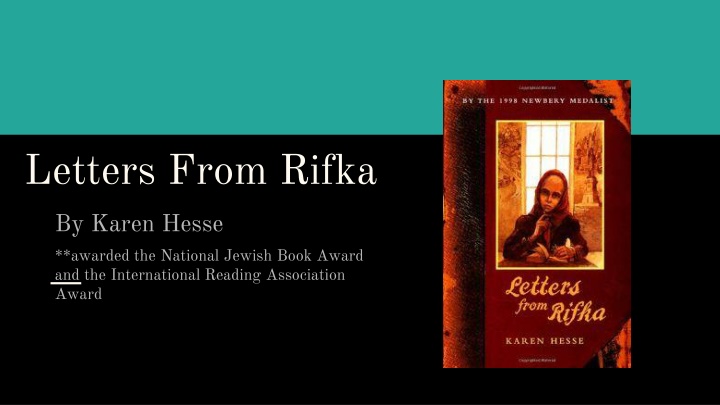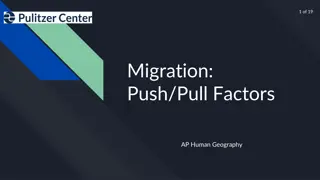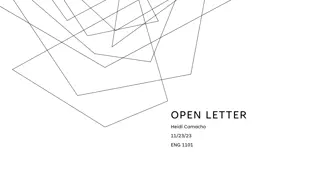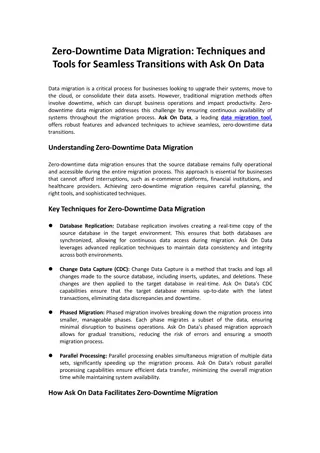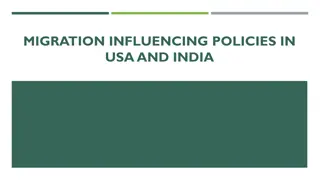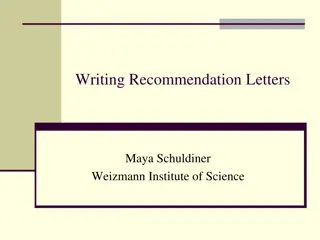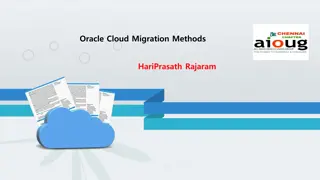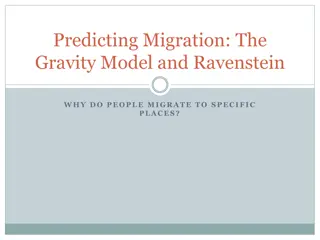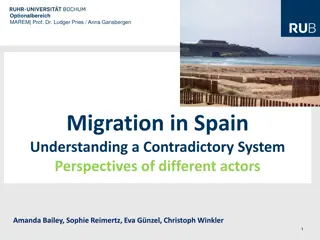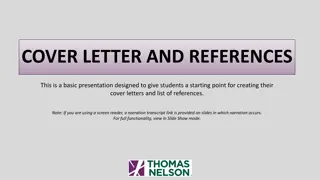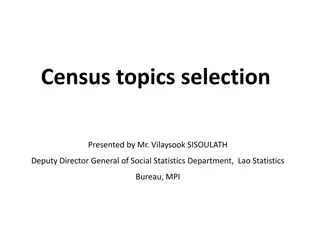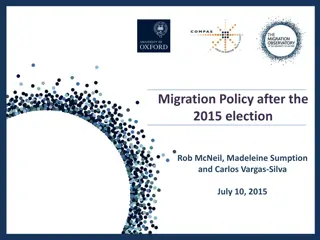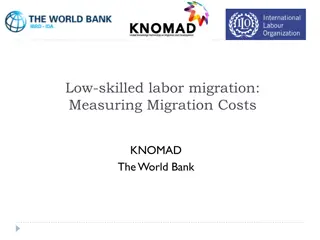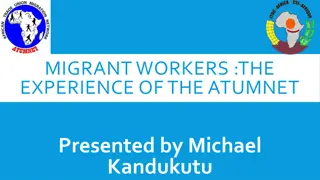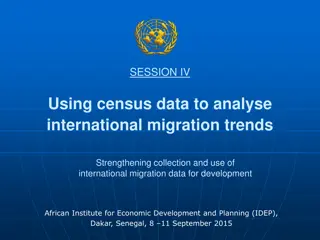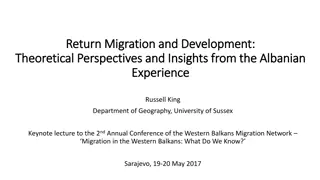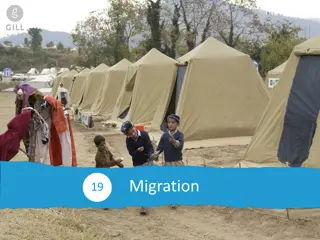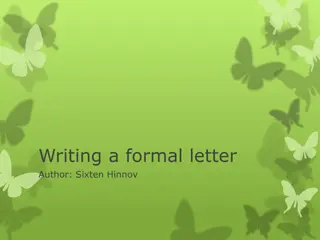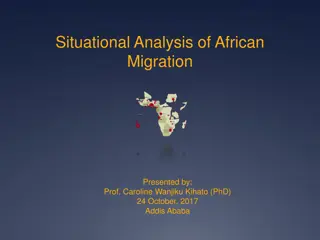Family's Migration: Letters from Rifka
Story follows Rifka, a 13-year-old Jewish girl, and her family's migration from Ukraine to the U.S. Faced with obstacles like illness, separation, and shipwrecks, Rifka holds onto hope. Themes include coming of age, family struggles, and resilience. Students will engage in activities like poetry analysis and literature circle roles to explore the book's depth.
Download Presentation

Please find below an Image/Link to download the presentation.
The content on the website is provided AS IS for your information and personal use only. It may not be sold, licensed, or shared on other websites without obtaining consent from the author.If you encounter any issues during the download, it is possible that the publisher has removed the file from their server.
You are allowed to download the files provided on this website for personal or commercial use, subject to the condition that they are used lawfully. All files are the property of their respective owners.
The content on the website is provided AS IS for your information and personal use only. It may not be sold, licensed, or shared on other websites without obtaining consent from the author.
E N D
Presentation Transcript
Letters From Rifka By Karen Hesse **awarded the National Jewish Book Award and the International Reading Association Award
Summary This is a story about a family s migration from Ukraine to the United States in the early 1900 s. The main character is a girl named Rifka who is 13 years old. Rifka and her family are a Jewish family escaping Russian persecution, and this book is a first person account of their story. They encounter many obstacles including illness, physical borders, separation from family, tragic shipwrecks, and persecution due to their beliefs and looks. But through all of this, Rifka holds onto hope, experiences new cultures, and learns new languages. Will she make it to the U.S. even without the rest of her family? The themes of social class, race, coming of age, intelligence versus beauty, and family struggles are present in this book. It is a powerful story that students will be able to relate to and learn from.
TEKS/ELPS addressed TEKS 5.4 Students understand, make inferences and draw conclusions about the structure and elements of poetry and provide evidence from text to support their understanding. 5.2B&E Students understand new vocabulary and use it when reading and writing. Students are expected to: use context (e.g., in-sentence restatement) to determine or clarify the meaning of unfamiliar or multiple meaning words; use a dictionary, a glossary, or a thesaurus to determine the meanings. ELPS Students will act out vocabulary words to clarify their meaning with peer support (it will be done in table groups) and technology/dictionary/glossary/thesaurus support. Students will write a letter in response to Rifka with the support of sentence stems and a word bank for vocabulary.
How we will teach the beginning and middle of the book: Poetry Poetry: We will discover the form and structure of Pushkin s poetry in each chapter. We can add on our findings to a continuous anchor chart. The world wall can be a visual references for our ELLS and we can play a review game to help get the ELLs talking about poetry structures to other students in the class (CALP). Rhyme, meter, rhyme scheme. We can add sentences stems for assistance to ELLs in conversations about anchor charts. I found the structure ________ in the part of the poem where ______________.
Throughout the book Connections to other subjects Throughout the book, members of the literature circle will have particular roles. The roles are: Literary Luminary Word Wizard Creative Connector Discussion Director Geography Guru Stupendous Summarizer The students will be responsible for focusing in on these roles as they read. For example, the Geography Guru will make connections to social studies by following Rifka s journey.
Poetry from Tovah- Informal Assessment Imagine that you are Rifka s cousin, Tovah. Choose a piece of poetry that Tovah would love. For example, Write an encouraging response to Rifka based on the theme of your poem. Include at least 2 examples of figurative language in your response. Some examples include... metaphor, simile, personification, hyperbole, symbolism Differentiation: -pull small groups of ELLs so they can connect, share, and build off of each other s vocab. They can choose the same poem for their response -Group opening and closing to the letter -brainstorming themes
Mini Lesson: Vocabulary Vocabulary: We will do Vocabulary Role Play (50 strategies pg 47-49) 1. Identify the key vocabulary beforehand (as the teacher). 2. When students read and they come across vocab they don t know, they write the words down on a sticky note and flag the page #. 3. Class comes together and shares the vocabulary that was found (adding sticky notes to a word wall/anchor chart). Students turn and talk to neighbors to figure out the meaning of words using text evidence and other resources in the classroom (online word search, dictionaries, encyclopedias). Students will connect the vocabulary to prior knowledge or experiences. (visuals are added to word wall/anchor chart) 4. Students will be given time to come up with practice a scene that incorporate their vocabulary. 5. At the end of the reading time, the class will come together and act out the vocabulary words through their dramatization scenes. Then the class will practice reading the paragraphs that the vocabulary words were in to build fluency and comprehension.
